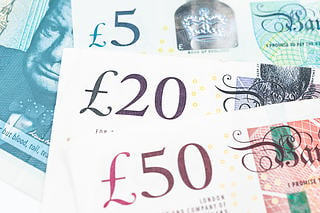GBP/USD holds gains near 1.2600 due to thin trading ahead of the New Year holiday
|
- GBP/USD appreciates as the US Dollar inches lower amid lighter-than-usual trading volumes ahead of the New Year holiday.
- The US Dollar may receive support from a rising hawkish outlook for the Fed’s interest rates in 2025.
- The Pound Sterling may face challenges as a surprise split vote within the BoE hints faster pace of monetary easing.
The GBP/USD pair extends its gains for the second consecutive day, trading near 1.2580 during the Asian session on Monday. The upward movement can be attributed to the subdued US Dollar (USD) amid lighter-than-usual trading volumes ahead of the New Year holiday.
However, the GBP/USD pair's potential upside may remain constrained as markets continue to process the US Federal Reserve’s (Fed) hawkish stance. Although the Fed reduced its benchmark interest rate by 25 basis points at the December meeting, the latest Dot Plot projections signal two rate cuts in 2025, reinforcing cautious sentiment.
Fed Chair Jerome Powell said earlier this month that Fed officials "are going to be cautious about further cuts" after an as-expected quarter-point rate reduction. The Fed’s hawkish message is likely to support the US Dollar (USD) and act as a headwind for GBP/USD in the near term.
The upside for the GBP/USD pair could be capped as the Pound Sterling (GBP) faces headwinds following a surprise split vote within the Bank of England (BoE), where three policymakers supported rate cuts. This suggests a potentially faster pace of easing in 2025.
At its December meeting, the BoE opted to keep interest rates steady at 4.75% while maintaining guidance for "gradual" rate cuts next year. BoE Governor Andrew Bailey commented, "We think a gradual approach to future interest rate cuts remains right, but with the heightened uncertainty in the economy, we can't commit to when or by how much we will cut rates in the coming year."
Pound Sterling FAQs
The Pound Sterling (GBP) is the oldest currency in the world (886 AD) and the official currency of the United Kingdom. It is the fourth most traded unit for foreign exchange (FX) in the world, accounting for 12% of all transactions, averaging $630 billion a day, according to 2022 data. Its key trading pairs are GBP/USD, also known as ‘Cable’, which accounts for 11% of FX, GBP/JPY, or the ‘Dragon’ as it is known by traders (3%), and EUR/GBP (2%). The Pound Sterling is issued by the Bank of England (BoE).
The single most important factor influencing the value of the Pound Sterling is monetary policy decided by the Bank of England. The BoE bases its decisions on whether it has achieved its primary goal of “price stability” – a steady inflation rate of around 2%. Its primary tool for achieving this is the adjustment of interest rates. When inflation is too high, the BoE will try to rein it in by raising interest rates, making it more expensive for people and businesses to access credit. This is generally positive for GBP, as higher interest rates make the UK a more attractive place for global investors to park their money. When inflation falls too low it is a sign economic growth is slowing. In this scenario, the BoE will consider lowering interest rates to cheapen credit so businesses will borrow more to invest in growth-generating projects.
Data releases gauge the health of the economy and can impact the value of the Pound Sterling. Indicators such as GDP, Manufacturing and Services PMIs, and employment can all influence the direction of the GBP. A strong economy is good for Sterling. Not only does it attract more foreign investment but it may encourage the BoE to put up interest rates, which will directly strengthen GBP. Otherwise, if economic data is weak, the Pound Sterling is likely to fall.
Another significant data release for the Pound Sterling is the Trade Balance. This indicator measures the difference between what a country earns from its exports and what it spends on imports over a given period. If a country produces highly sought-after exports, its currency will benefit purely from the extra demand created from foreign buyers seeking to purchase these goods. Therefore, a positive net Trade Balance strengthens a currency and vice versa for a negative balance.
Information on these pages contains forward-looking statements that involve risks and uncertainties. Markets and instruments profiled on this page are for informational purposes only and should not in any way come across as a recommendation to buy or sell in these assets. You should do your own thorough research before making any investment decisions. FXStreet does not in any way guarantee that this information is free from mistakes, errors, or material misstatements. It also does not guarantee that this information is of a timely nature. Investing in Open Markets involves a great deal of risk, including the loss of all or a portion of your investment, as well as emotional distress. All risks, losses and costs associated with investing, including total loss of principal, are your responsibility. The views and opinions expressed in this article are those of the authors and do not necessarily reflect the official policy or position of FXStreet nor its advertisers.